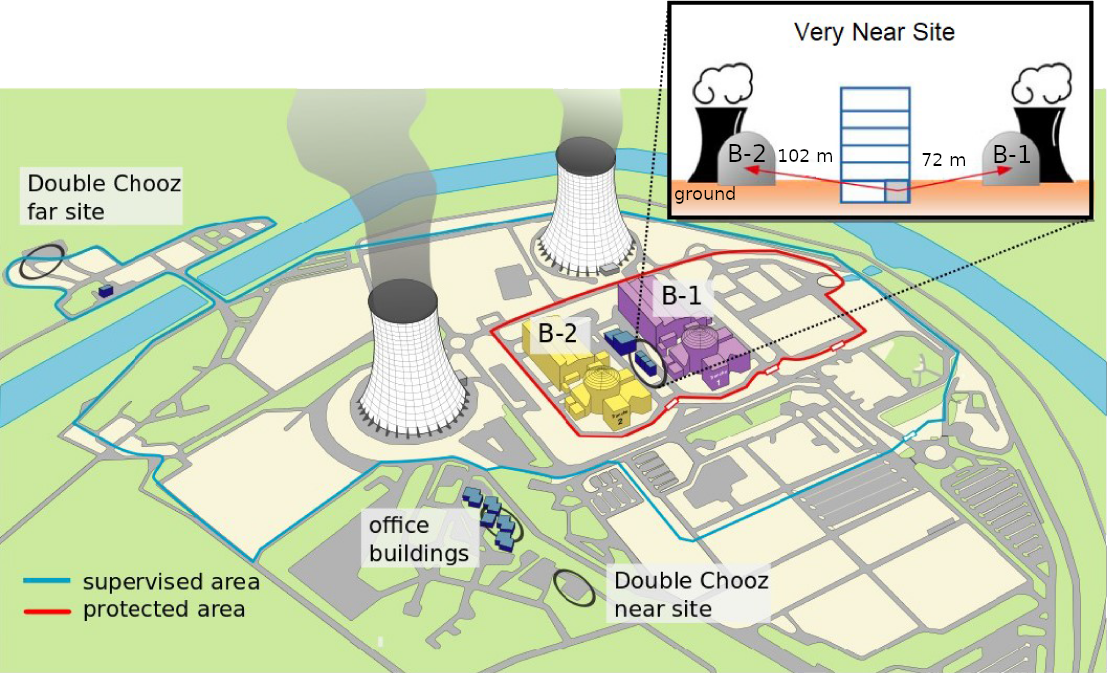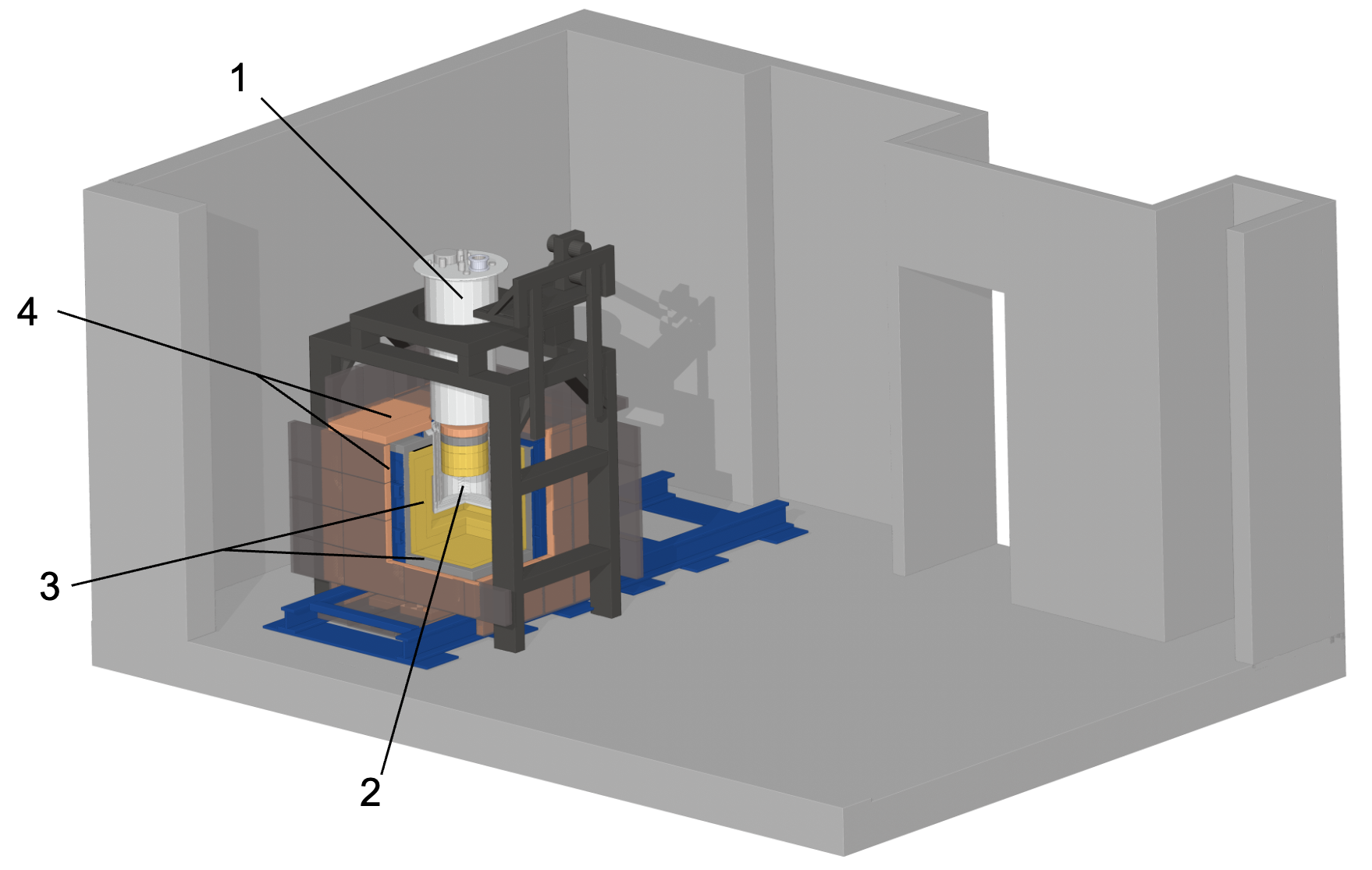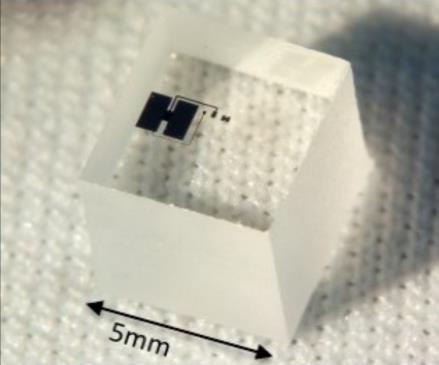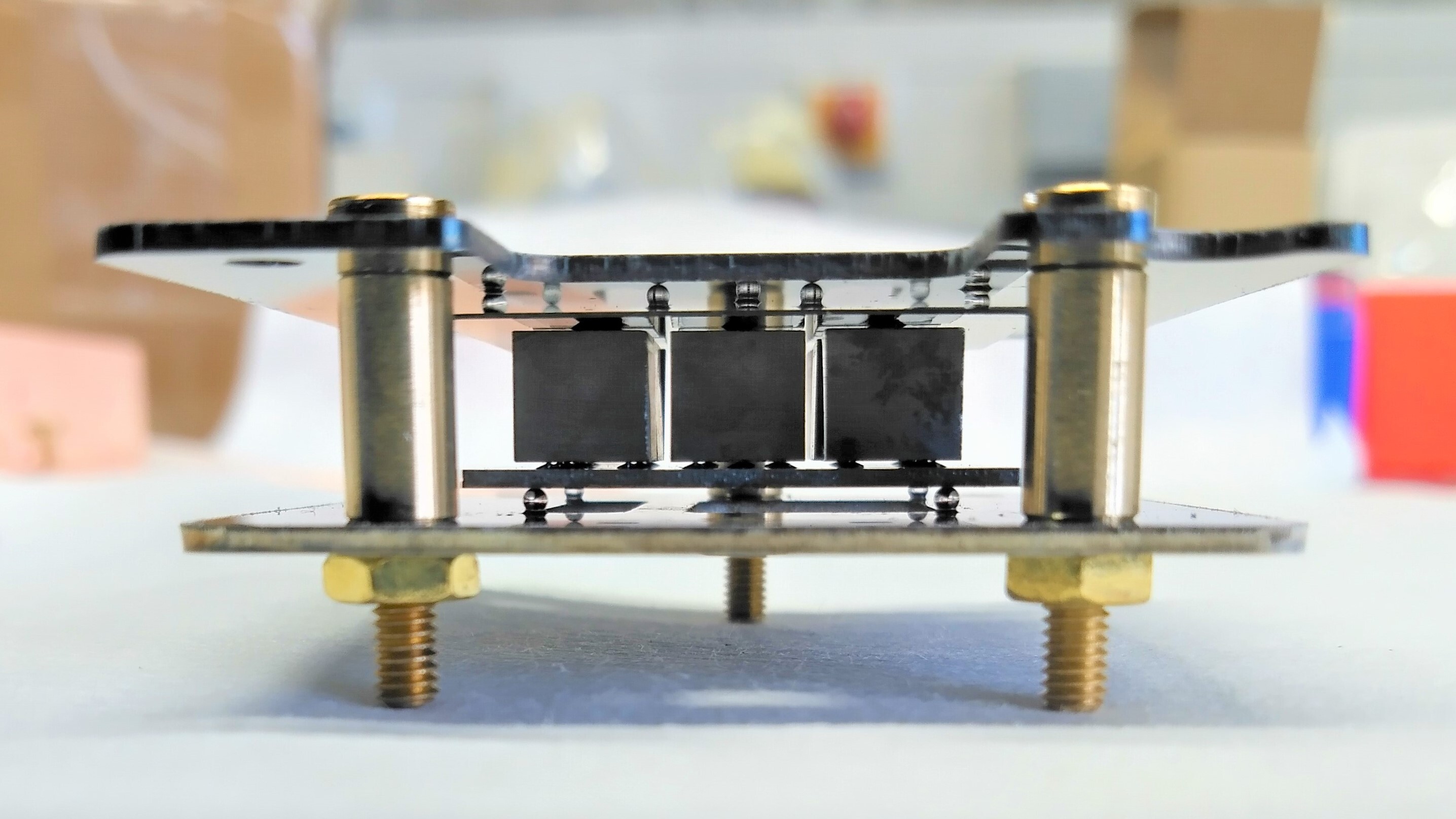Experimental Setup
The Very Near Site (VNS) at the Chooz Nuclear Power Plant
The NUCLEUS experiment will be installed at the Chooz nuclear power plant in the French Ardennes. The plant is operated by the French company Electricité de France and composed of two 4.25 GWth N4-type pressurized water reactors named B1 and B2. The two cores are separated by 160 m and located at about 7 m above ground level.
The experiment will be installed at a new experimental site called VNS. It consists of a 24 m² basement room in a five-story office building located between the two cores at a distance of 72 and 102 m from B1 and B2, respectively. Thanks to the huge antineutrino flux from each core (10²¹ v̅e/s per core), the average neutrino flux calculated at the VNS is 1.7·10¹² v̅e/(s·cm²).

The NUCLEUS active and passive shielding

For background reduction, the experimental cryogenic volume (2) is being surrounded by a compact passive (3) and active shielding. The outermost passive layer will be made of lead, to efficiently shield against gammas originating both from environmental radioactivity and from the interaction of cosmic rays the building structure. Then, layers of borated polyethylene will follow to efficiently moderate and attenuate external neutrons coming both from the interaction of muons with the outer layers of lead and with the VNS building materials themselves. An active muon veto (4) made from plastic scintillators will surround the experiment in order to efficiently reject muons that enters the experimental volume. The external shielding will be completed by a cold shield inside the cryostat (1) made of a muon veto, lead and polyethylene layers and boron carbide to capture efficiently neutrons that coul enter in the detector.
The detectors are encompassed by an active veto made of six high purity germanium crystals. This veto, called cryogenic outer veto will allow to further reduce the background induced by gamma, muons and neutrons reaching the detector vicinity. A silicon holder will host the crystals and be equipped with TESs in order to act as a last veto system and further reduce the background reaching the crystals.

The NUCLEUS Detector
The detector consists of a 10 g target designed to achieve an unprecedented low energy threshold. It is complemented by an inner veto holding and encapsulating the target, and a surrounding kg-scale cryogenic calorimeter used as outer veto.
The target consists of a 3×3 array of CaWO₄ (6 g) and a 3×3 array of Al₂O₃ (4 g) crystals. This multi-target approach will provide an in-situ background characterization. Since the CEνNS scattering rate scales as (number of neutrons)², it is strongly enhanced in CaWO₄, while fast background neutrons are expected to induce comparable signatures in CaWO₄ and Al₂O₃. Furthermore, coincident background events in several target detectors can efficiently be discriminated from CEνNS events, which are single scatters.
The low threshold on nuclear recoils is achieved with cryogenic transition edge sensors (TESs) based on the technology developed by the CRESST experiment. With a 0.5 g prototype detector made from a (5 mm)³ Al2O3 cubic crystal, an unprecedented threshold of (19.7±0.9) eV has been reached, a value that enables the exploitation of the full potential of the CEνNS signal. The NUCLEUS collaboration is working to scale up the number of calorimeters to reach a total mass of 10 g.
To increase the sensitivity, a future upgrade of the number of detectors is planned to reach a total target mass of 1 kg. This upgrade would enable NUCLEUS to do precision tests of basic neutrino properties.
The base temperature of about 10 mK required to operate the TES of NUCLEUS is provided by a cryostat consisting of a 4He-3He dilution refrigerator complemented by a pulse-tube cryocooler (supplied by Bluefors Oy).

